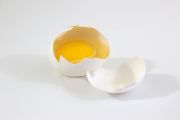Time to top up your sunshine vitamin
Jun 29, 2017
Posted by: Monique Parker
During these summer months, you should make the most of the sunshine and top up your sunshine vitamin.

I’m not sure many people have heard of the term ‘sunshine vitamin’, but I’m convinced most people have heard about vitamin D.
Vitamin D is actually a complex hormone rather than a vitamin, with many functions in the body, such as regulation of the immune system and bone health. Most people are calling it a vitamin though.
Unlike other vitamins, vitamin D is made in the skin from exposure to sunlight. The ultraviolet B rays of the sun cause a reaction in the skin that produces previtamin D3. This is then, first by the liver, then by the kidneys, converted to the active form of vitamin D. It then binds to vitamin D receptors all through your body so it can do its job in different places.
Vitamin D3 can also be found in certain foods such as fatty fish, liver, egg yolk, red meat, cheese, butter, cod liver oil, and fortified foods (foods with added vitamin D).

There is not only vitamin D3, that is found in humans and animals, there is also vitamin D2.
Vitamin D2 is formed by UV radiation in certain plants and can be found in mushrooms or sprouted seeds for instance.
For us humans, vitamin D3 is better absorbed and used in the body than vitamin D2.
Vitamin D is a fat-soluble vitamin, unlike vitamin C, that is water-soluble, dissolves in water and any excess excreted. Fat-soluble vitamins need bile acids to be absorbed and any excess will be stored in the body for later use. That’s why it is more problematic to overdose on fat-soluble vitamins than water-soluble ones.
Only about 10-20% of our vitamin D3 intake is from foods, the other 80-90% should come from exposure to sunlight. And that’s where the problem begins. How often do we have enough sunshine and can we expose ourselves enough to get the required intake of this valuable vitamin?
It is not just a problem in the UK. Almost 50% of the world’s population doesn't get enough vitamin D. Around 1 billion people worldwide are actually suffering from vitamin D deficiency.
There are many factors involved in the low vitamin D status of people:
- Seasonal lack of sunshine.
- Not enough outdoor activities.
- Reduced vitamin D production in the skin when people are ageing. When you get older, it’ll take longer to produce vitamin D.
- Limited exposure to the sun (people who are homebound, people whose profession keeps them indoors, religious dress codes etc.).
- Medical conditions that cause fat malabsorption, i.e. Crohn’s disease.
- Obesity (remember vitamin D is fat-soluble so it can build up in fat under the skin and is not that available for use).
- Dark skin (I’ll explain more about that later).
- Medications that can deplete vitamin D, such as Metformin or steroids.
So, we can produce large amounts of vitamin D ourselves when we strip off and expose lots of skin to the sun. But how long should we be in the sun and when? And isn’t too much sun causing skin cancer?
 Vitamin D production actually happens quite quickly. In about half the time it takes for your skin to get sun-burned, you can make a good amount of vitamin D. But you need to expose a bit more than just your face and arms. The more skin you expose, the more vitamin D you can make.
Vitamin D production actually happens quite quickly. In about half the time it takes for your skin to get sun-burned, you can make a good amount of vitamin D. But you need to expose a bit more than just your face and arms. The more skin you expose, the more vitamin D you can make.
People with a very light skin only need about 15 minutes of decent sun exposure to obtain the vitamin D they need. However, people with a dark skin will need up to 2 hours to produce the same amount of vitamin D.
Why do dark-skinned people need more sun to produce vitamin D?
It has got to do with melanin, the pigment that gives skin its colour. Melanin protects the skin against damage from too much ultraviolet light and by blocking the rays of the sun, less ultraviolet light enters the skin and as a result, less vitamin D is being produced. So, the darker your skin, the longer it takes to produce the necessary vitamin D.
It also depends where you live. People in the UK make a lot less vitamin D than someone living in Africa, near the equator, where the sun is shining all year around.
It also depends what time of the day you get your sunshine. Between 11am and 3pm the rays of the sun are the strongest in the UK because of the angle of the sun. The closer to noon you expose your skin to the sun, the better the angle of the sun is and the more vitamin D you produce, but there is a much higher chance of burning your skin and you increase your risk of non-melanoma skin cancer if you overexpose your skin to such strong rays.
If you would like to know if the sun is strong, here is a useful tip: look at your shadow and see if it is shorter than your height; if it is, the ultra-violet rays of the sun are strong.
Of course, there is always a risk when you’re exposing your skin to the sun. But there is another risk. Overprotection from the sun increases vitamin D deficiency and vitamin D deficiency has been linked to various types of cancer, autoimmune diseases, bone diseases etc. This is quite a dilemma. What to do? Covering yourself in factor 50 sun cream, staying out of the sun completely?
Cancer Research UK recommends protecting your skin from sunburn between 11am and 3pm by wearing protective cloths, a hat and sunglasses and using sun cream on body parts that you can’t cover.
Avoid excessive sun exposure and particularly sunburns during childhood.
I would recommend enjoying the sun safely and taking care not to burn, so you will be able to make the much-needed vitamin D. Also, don’t forget that even when it is cloudy you can still burn as 90% of ultra-violet rays can pass through light cloud. Sand and water reflect ultra-violet rays too, so when you’re at the beach you’ll burn quicker.
Back to vitamin D now.
80-90% of our vitamin D is made in the skin by sunlight, the other 10-20% comes from foods such as fatty fish, liver, egg yolk, butter and fortified foods (foods with added vitamin D).

As explained above, it is difficult to tell how much sun exposure you exactly need to produce a certain amount of vitamin D.
I would recommend making sure you go outdoors and expose yourself to the sun and that you regularly eat the foods that contain vitamin D. Sun exposure for 10 to 15 minutes to face, arms, hands or back, a couple of times a week, without sun cream.
Vitamin D supplements, all year around, are recommended for those people who are at risk of deficiency, i.e. the elderly or anyone who doesn’t get out of the house much. But supplementation is also recommended for everyone else from October till April, when there is less sun, and for anyone with an insufficient or deficient level of vitamin D.
If you’re in doubt, get your vitamin D level checked.
How much vitamin D supplementation you need depends on your current vitamin D level. You can buy finger-prick blood spot tests that you can do yourself at home. However, if you’re not up to this, you could get it checked by your GP.
According to the Institute of Functional Medicine in the USA, the optimal vitamin D level is 50-80 ng/ml. 30-50ng/ml is insufficient and they class levels of below 30 ng/mL as deficient. (1 ng/ml = 2.5nmol/L). Recommendations are 2,000IU (units) of vitamin D if your level is below 50. If you’re deficient or severely deficient, i.e. less than 30 or 10ng/ml, the amount of vitamin D supplementation will be a lot higher, but it is best to see a health practitioner then.
Enjoy the sun, be sensible, and get your vitamin D level checked
References:
Aspray TJ et al (2014), ‘National Osteoporosis Society Vitamin D guideline summary’, Age Ageing 2014 Sep;43(5):592-5 /www.ncbi.nlm.nih.gov/pubmed/25074538
Craig A. Elmets, MD reviewing Terushkin V et al (2010), How much sunlight is equivalent to vitamin D supplementation?, J Am Acad Dermatol 2010 Jun.
www.jwatch.org/jd201006040000002/2010/06/04/how-much-sunlight-equivalent-vitamin-d
Gómez A et al (2003), Review of the concept of vitamin D "sufficiency and insufficiency”, Nefrologia. 2003;23 Suppl 2:73-7 www.ncbi.nlm.nih.gov/pubmed/12778859//
Mangin M et al (2014), ‘Inflammation and vitamin D: the infection connection’, Inflamm. Res. (2014) 63:803–819
www.ncbi.nlm.nih.gov/pmc/articles/PMC4160567/
Nair, R & Maseeh, A (2012), ‘Vitamin D: The “sunshine” vitamin’, Journal of Pharmacology & Pharmacotherapeutics, 3(2), 118–126 www.ncbi.nlm.nih.gov/pmc/articles/PMC3356951/
Reichrath J & Reichrath S (2012), ‘Hope and challenge: the importance of ultraviolet (UV) radiation for cutaneous vitamin D synthesis and skin cancer’, Scand J Clin Lab Invest Suppl. 2012;243:112-9
www.ncbi.nlm.nih.gov/pubmed/22536771
Reichrath J & Nürnberg B (2009), ‘Cutaneous vitamin D synthesis versus skin cancer development: The Janus faces of solar UV-radiation’, Dermatoendocrinol. 2009 Sep;1(5):253-61
www.ncbi.nlm.nih.gov/pmc/articles/PMC2836430/
Vitamin D Council www.vitamindcouncil.org/about-vitamin-d/how-do-i-get-the-vitamin-d-my-body-needs






